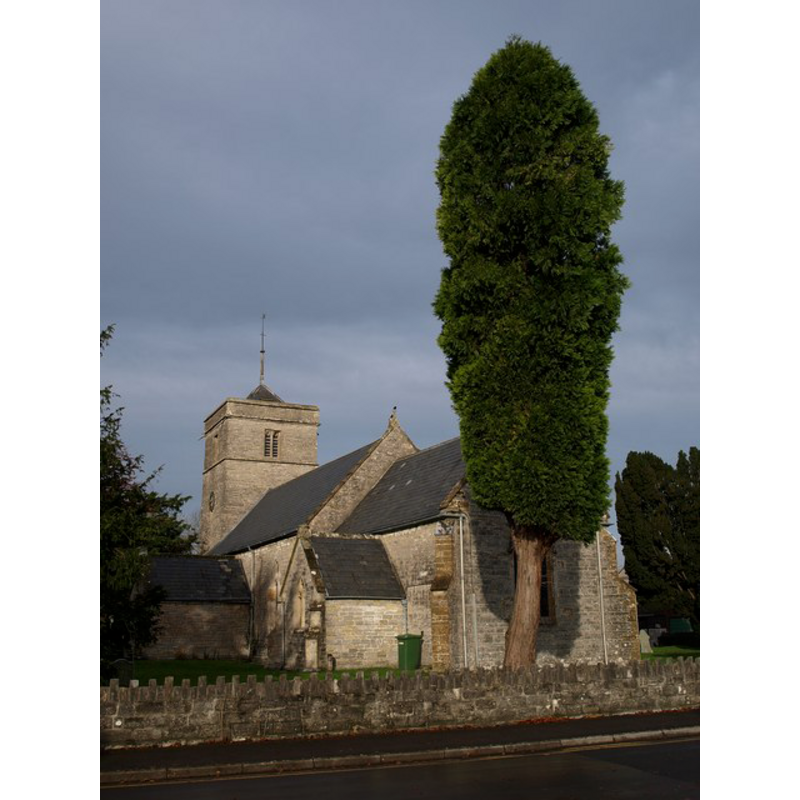Street nr. Shobdon? / Strate / Strete

Image copyright © Derek Harper, 2008
CC-BY-SA-2.0
Results: 1 records
INFORMATION
FontID: 15406STR
Object Type: Baptismal Font1
Church/Chapel: Parish Church of the Holy Trinity [originally St. Gildas'? St. Giles'?]]
Church Patron Saints: The Holy Trinity [originally St. Gildas? St. Giles?]
Church Location: Church Road, Street, Somerset, BA16 0AQ, UK -- Tel.: +44 1458 442671
Country Name: England
Location: Somerset, South West
Directions to Site: Located off (N) the B3151, 15-20 km E of Bridgwater
Ecclesiastic Region: Diocese of Bath & Wells
Historical Region: Hundred of Glastonbury Twelve Hides -- Hundred of Whitley [in Domesday]
Font Location in Church: Inside the church
Century and Period: 14th - 15th century, Decorated? / Perpendicular?
Font Notes:
Click to view
There is an entry for this Street [variant spelling] in the Domesday survey [http://opendomesday.org/place/ST3507/street/] [accessed 9 May 2018]. but it mentions neither cleric nor church in it. The National Monuments Record [www.imagesofengland.org.uk/Details/Default.aspx?id=267776] [accessed 29 September 2009] reports: "Lead-lined C14 octagonal font" in this church. Not mentioned in Pevsner (1958). A local history of the church prepared in 1977 by Mr. Roger Burdock, then Churchwarden of Holy Trinity [http://www.streetandwalton.co.uk/church/history.php] [accessed 29 September 2009} informs: "When the interior of the Church was restored and re-decorated in 1947, several pews were removed so that the font could be placed in its present position. Like many fonts in nearby Churches, it is made of coarse-grained limestone, probably from Doulting Quarry, and, although it is not classified as a good one, it is of the 'decorated' period of architecture and would have been installed when the Chancel was built, so that it is about 650 years old […]. Marks of pre-Reformation cover fastenings are visible on the rim of the font. The inner basin is 12" deep, so that total immersion was presumably still the general practice when the font was made. The text on the lead-lining on the rim is probably Victorian. It is interesting to note that the font is cracked horizontally around the bowl below the top moulding, perhaps due to freezing of the water, which was kept in the bowl for long periods prior to the Reformation." Present cover is 19thC. The entry for this parish in the Victoria County History (Somerset, vol. 9, 2006) notes: "Street church was mentioned in two spurious preConquest charters but its site, the roughly circular enclosure, and formerly visible parts of the fabric suggest the early nature of its foundation. The dubious charters may have been an attempt by Glastonbury abbey to provide documentation for a church or chapel which had been in their possession for some time. [...] Its unusual site on the parish boundary might have been chosen because of the presence there or nearby of an earlier chapel, dedicated to St. Gildas, which was still standing in 1278 [...] and which was said to have been built by Gildas in the name of the Trinity. This in its turn may have been deliberately built on a pre-Christian site. [...] The present church was called locally after St. Gildas or St. Giles in the early 16th century. [...] By 1705 it kept its dedication festival on Trinity Sunday and it is now known as Holy Trinity [...] The font is [...] 15th century."
COORDINATES
Church Latitude & Longitude Decimal: 51.1313, -2.7329
Church Latitude & Longitude DMS: 51° 7′ 52.68″ N, 2° 43′ 58.44″ W
UTM: 30U 518689 5664460
MEDIUM AND MEASUREMENTS
Material: stone, limestone
Font Shape: octagonal (mounted)
Basin Interior Shape: round
Basin Exterior Shape: octagonal
Drainage Notes: lead-lined
Basin Depth: 30 cm*
Notes on Measurements: * [cf. FontNotes]
INSCRIPTION
Inscription Notes: [cf. FontNotes]
Inscription Source: [cf. FontNotes]
LID INFORMATION
Date: 19th century?
Notes: [cf. FontNotes]
REFERENCES
Victoria County History [online], University of London, 1993-. Accessed: 2018-05-09 00:00:00. URL: https://www.british-history.ac.uk.